Going to Antarctica as a renewable energy scientist?
Ever since I first visited the Arctic, I dreamed of doing science in Antarctica, but with a study background in renewable energy, I never thought it would be possible. Who would consider using renewable energy in these conditions, right? Well, it turns out it does make a lot of sense to use renewable energy sources in Antarctica. Not only for ethical reasons, but it may even become financially interesting if you use it long enough.
Polar operators usually need a hefty budget for fuel and transport of fuel to their various bases and vessels. With the Antarctic summer having 24h of sunlight and the notorious katabatic winds that hurl down the continent, wouldn’t it be possible to take advantage of that and save on fuel? If you ask the crew of the Belgian Antarctica Research Expedition at the Princess Elisabeth, they will tell you: Of course, you can!
A zero-emission Antarctic station
This Antarctic base was designed by the International Polar Foundation as a zero-emission station. With nine relatively small wind turbines and countless solar heaters and photovoltaic panels , they completely power the station during their four-month summer season.
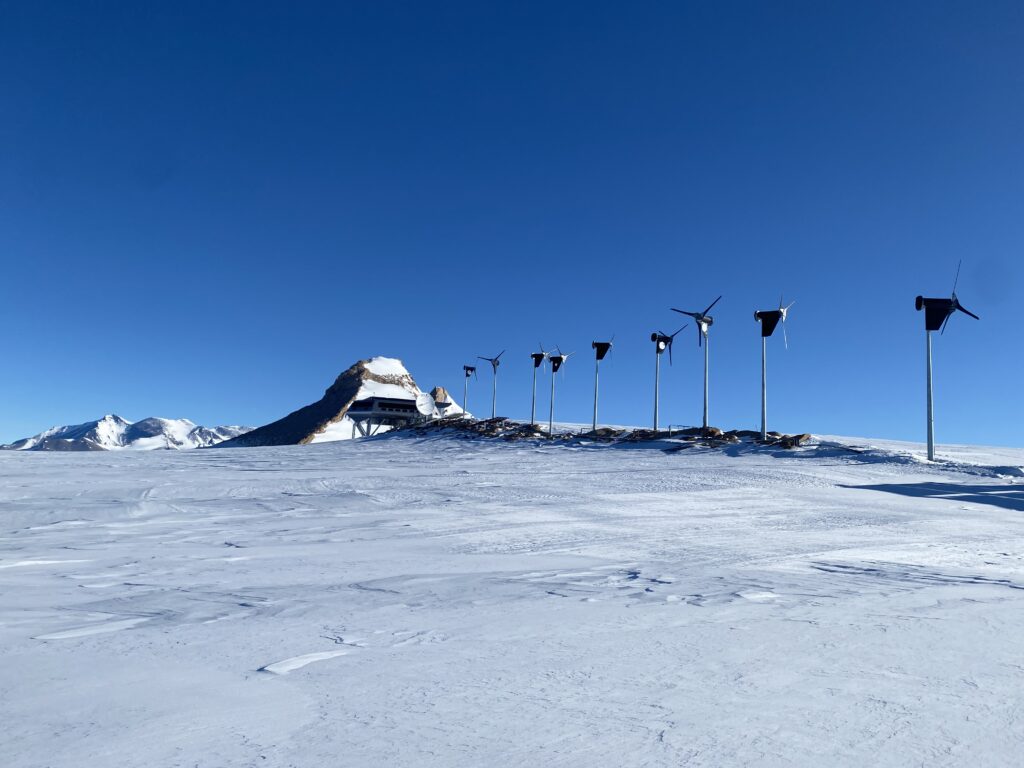
Although these turbines are small, they end up producing about two thirds of the energy for the station! Since I work on experimental wind energy research for my PhD it made my heart beat a bit faster when I first heard about this.
A unique experiment for the white continent
Thanks to the Swiss Polar Institute, I was able to take the experiments I previously used in the Swiss Alps to Antarctica, to collect wind profiles up to 300m above the ground using a remote sensing method. The so-called Doppler wind LiDAR measures the wind speed using the principle of the Doppler effect, which causes laser pulses sent out by the machine to return at slightly different frequencies based on the speed of the wind.
These LiDAR measurements have become increasingly popular for wind energy contractors as a method to accurately measure the winds and assess how much energy these winds can generate in a certain location however, this type of instrument has rarely, if not never, been used in Antarctica before.
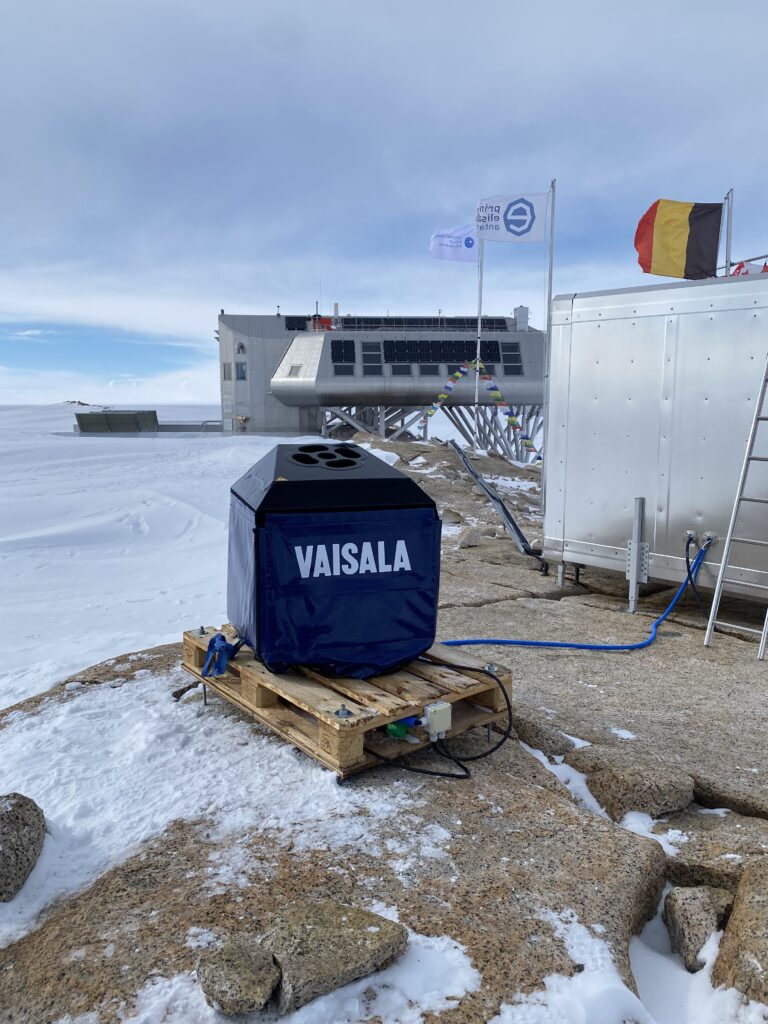
More sensors = more fun!
Although these LiDAR measurements are already worth collecting during an Antarctic field campaign, we decided to take with us some more wind sensors that were to be installed in the antenna mast next to the base. The antenna mast was 30 metres tall when it was constructed, but due to the massive amounts of snowdrift, about 3.5 metres have been snowed in since. We planned to install two ultrasonic anemometers, one at the top of the mast and one at the approximate height of the turbines. This however, is easier said than done…
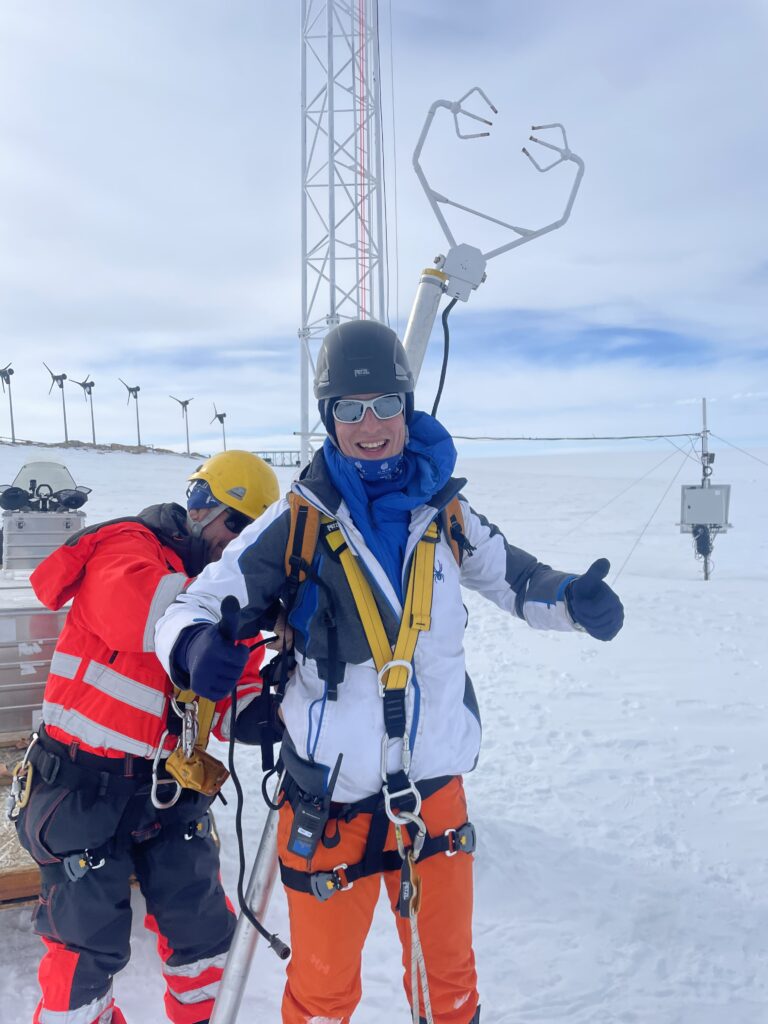
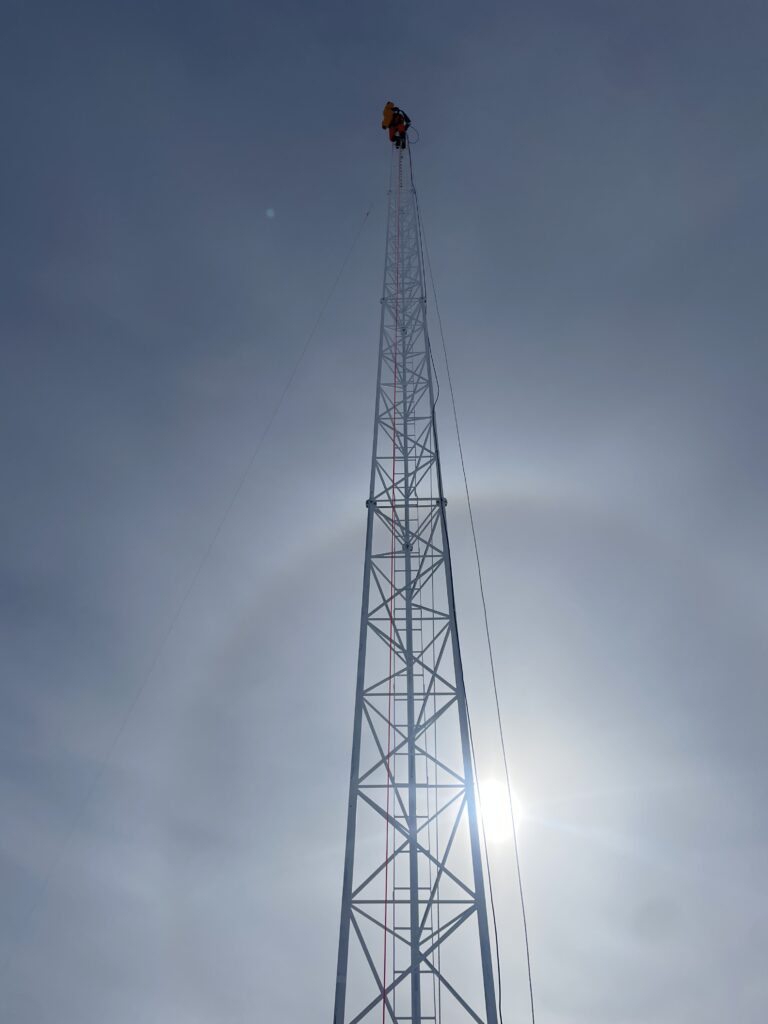
This installation meant climbing up the 30m mast with a sonic anemometer mounted on a huge metal pole on your back! I do enjoy climbing and being up in the air so I had a lot of fun doing this, as you can see. We even have this amazing drone footage of me and a guide installing the anemometer at the very top of the mast.
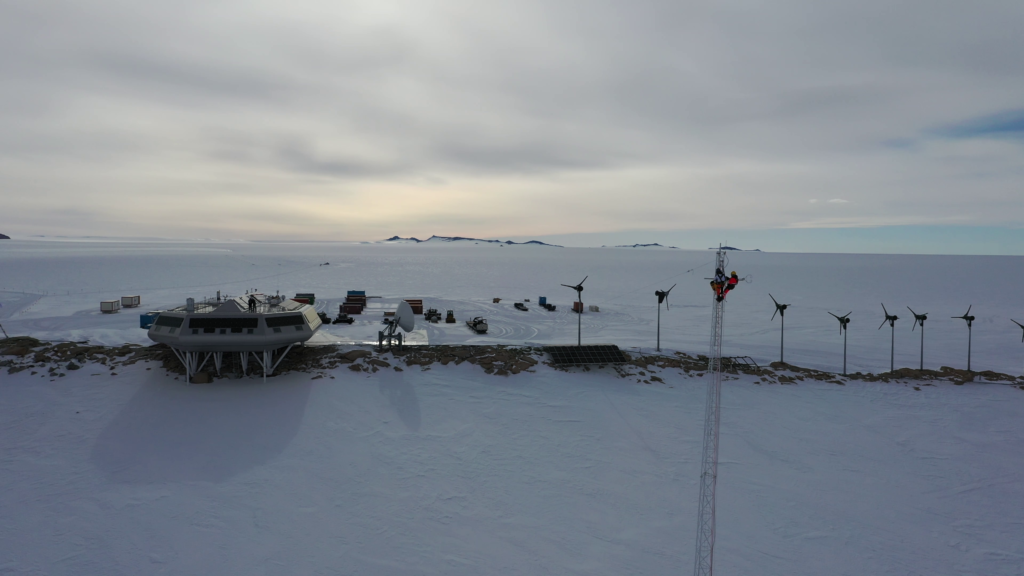
Luckily, on the two days it took us to install the two anemometers, the weather was very calm. And this is exactly one of the situations that I am interested in. Why and when do longer periods of wind calm occur at Princess Elisabeth Antarctica? We hope that this new wind profile dataset helps us better understand how the local microclimate is influenced by the Sør-Rondane mountains just south of the station. Although the wind may be calm in our part of the atmosphere close to the ground, that doesn’t necessarily mean that it can’t be windy much higher up. The mountains tend to shield the station from the winds coming from the south.
Storm! A gift and a curse
Luckily the weather gave me the time needed to troubleshoot my experiments and get them all operational within 4 days of arriving at the station. Directly after that, we were greeted by a great storm.
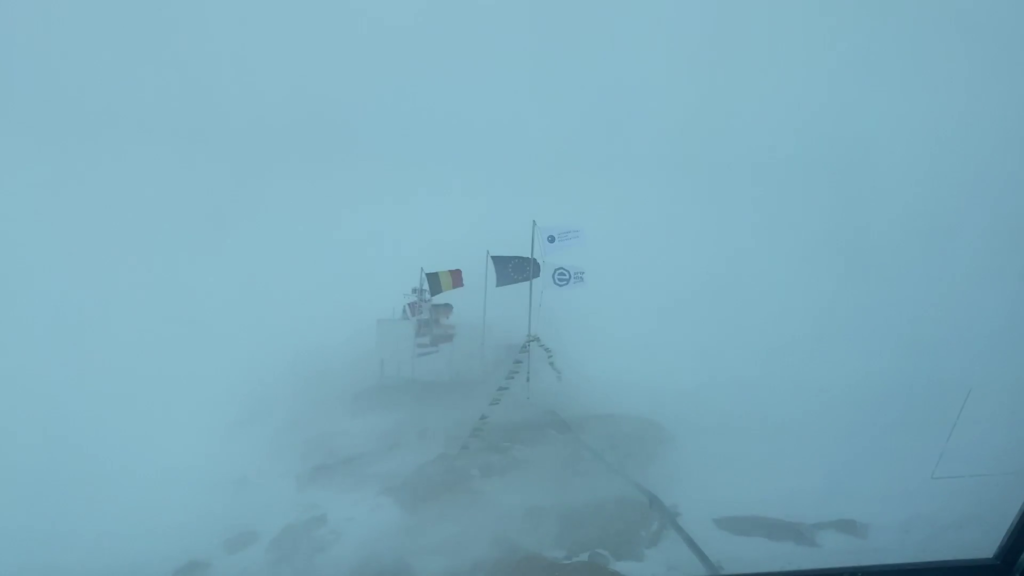
These types of storms were the second type of event that I was after and I was delighted to get some high-wind speed events in my dataset! However, I soon realised that good data collection was the silver lining in our situation. Storm means not going outside, or if you do, you better be prepared to get blasted by snow. Every single part of your skin that is exposed makes itself known as soon as you get exposed to the wind.
Because my LiDAR was packed in a special winter casing it started collecting a lot of drift snow inside its “winter coat”. To ensure it would continue collecting data, I had to go out every couple of hours to clean out the snow.
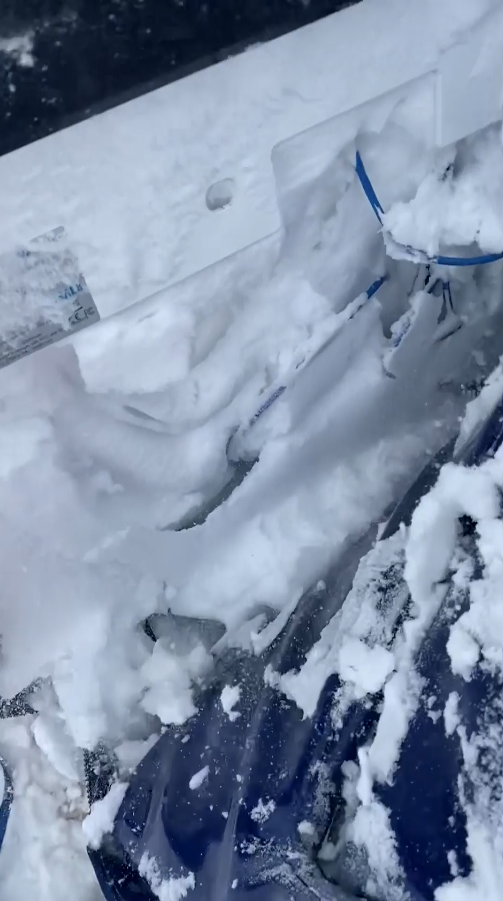
Luckily the machine held up well and I actually enjoyed experiencing the extreme weather myself.
The closure of the station for the season
After the first storm cleared and my experiments seemed to be working optimally, I got some time to help out my colleagues with their experiments. Hours spent in the field turned into days and weeks and time flew by with me periodically going outside to collect my data and then working on my colleagues’ weather stations. And soon the sun started to set again in the latter part of February. Even though I experienced the polar day and the polar night many times in the Arctic, it was something special to see it in Antarctica, the vastness of the ice and the mountains makes it that much more impressive! In the evenings I occasionally had some time for recreational activities too, such as a small Nordic skiing loop to the airport and back.
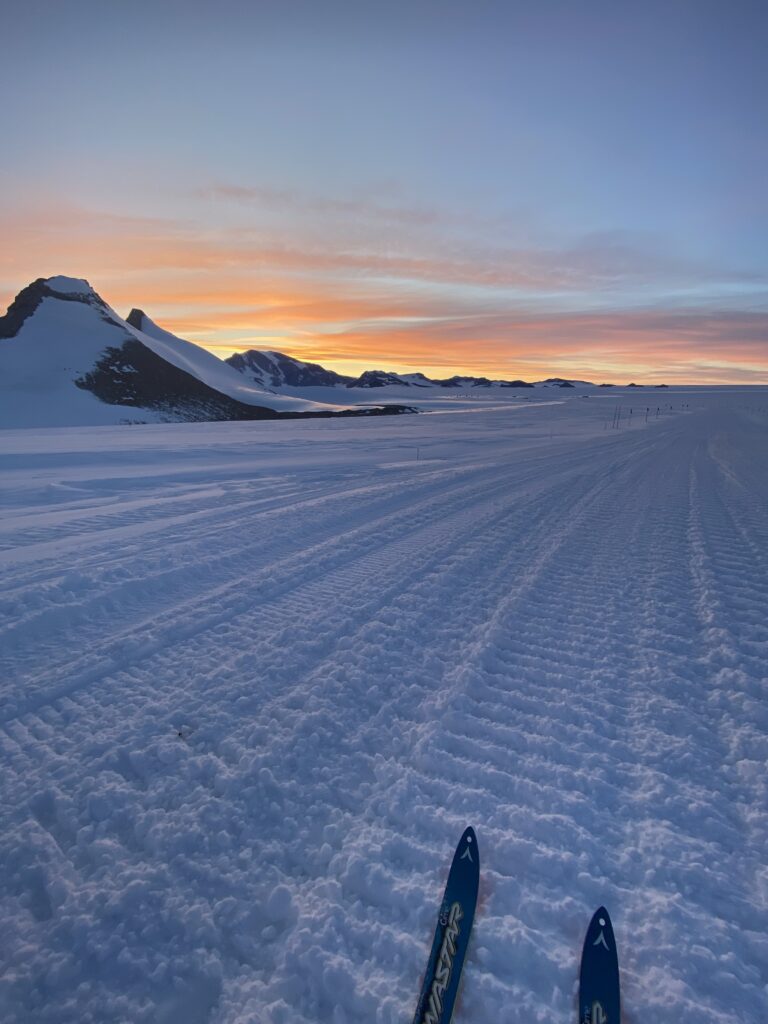
Before I realised it, I had been at the station for six weeks and it was time to pack up my instruments for their return to Switzerland. I soon had to pack the LiDAR as another storm was forecasted to roll in before the weekend and only stop the day before we would leave. After some calculations and discussions, we decided that it would be possible to leave the ultrasonic anemometers on the antenna mast for the winter season to see if we could collect the dataset over winter as well. This required me to troubleshoot and reprogram my instruments for the winter and include some DIY attachments of my logger box to the mast, as we did not anticipate the need to make our setup winterproof!
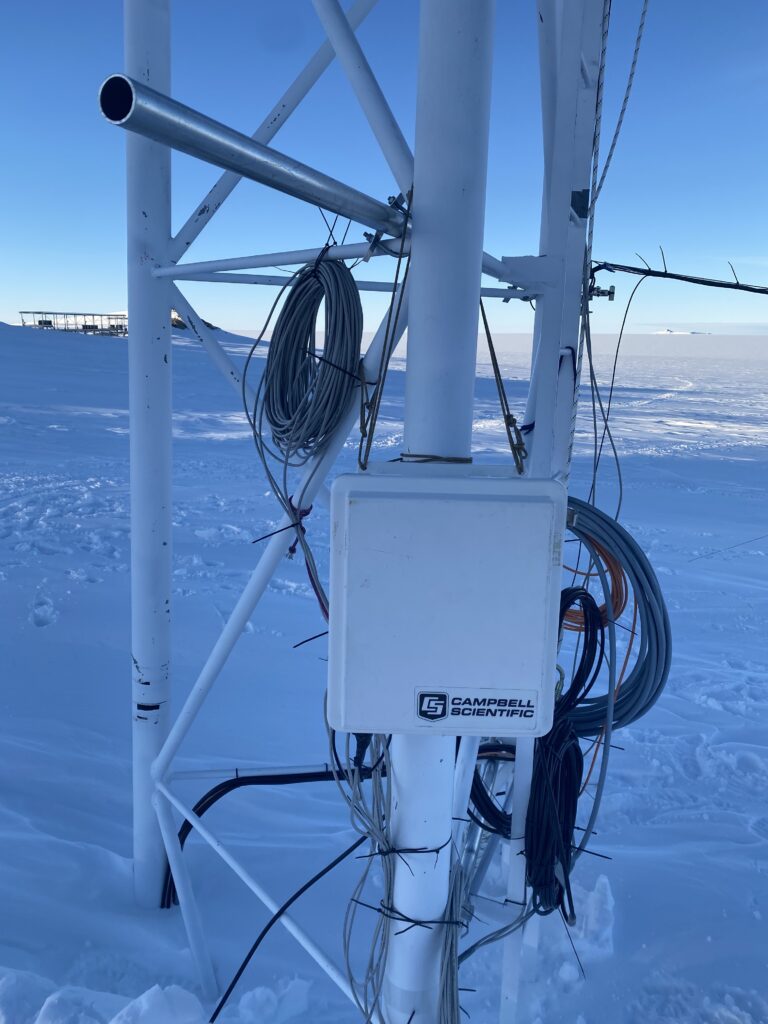
I wish my colleagues who will visit the station next season all the best in untying the frozen knots that I made and in putting the proper mounts in place as we would usually!
Although I will miss the beauty and serenity of the Antarctic, I am happy to start heading back north. I hope to be able to visit this beautiful continent again in the future for more interesting research.
A final note
Some of you may have wondered, isn’t it a bit hypocritical to vouch for sustainability and do renewable energy research in Antarctica? All that while there is a tonne of emissions related to travelling to and from Antarctica? Indeed, it would be. However, thanks to the progressiveness of the Swiss Polar Institute I was able to apply for funds to offset my CO2 emissions and those of my cargo for the travel to and from Antarctica!
For the people who are interested here’s my calculation, which I was able to offset using these funds.
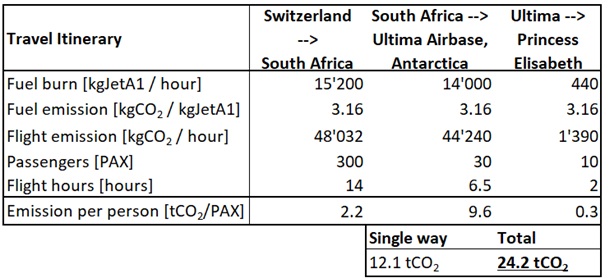
Brandon van Schaik is a PhD student at the Laboratory of Cryospheric Sciences at EPFL Valais Wallis ALPOLE in Sion, Switzerland. His fieldtrip took place during the austral summer 2023-2024 with financial support from a Polar Access Fund grant.
Header photograph and footage: © 2024 Simon Steffen, all rights reserved.